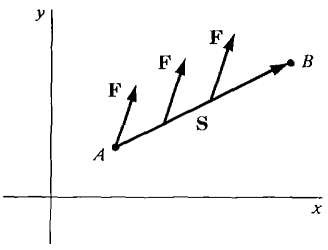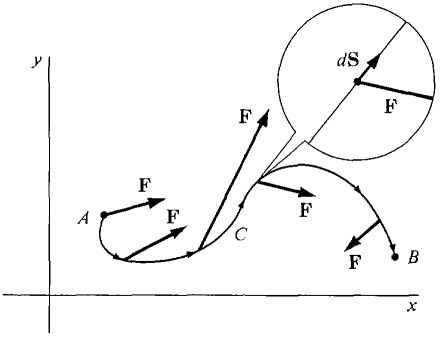| The ebook Elementary Calculus is based on material originally written by H.J. Keisler. For more information please read the copyright pages. |

|

Home  Vector Calculus Vector Calculus  Line Integrals Line Integrals  Introduction Introduction |
|






|
|
Line Integral
13.2. LINE INTEGRALS There are two ways to generalize the integral to functions of two or more variables. One way is the line integral, which we shall study in this section. The other is the multiple integral, which was studied in Chapter 12. The line integral can be motivated by the notion of work in physics. The work done by a constant force vector F acting along a directed line segment from A to B is the inner product W = F · S where S is the vector from A to B (Figure 13.2.1).
Figure 13.2.1 If the force vector F(x, y) = P(x, y)i + Q(x, y)j varies with x and y and acts along a curve C instead of a straight line S, the work turns out to be the line integral of F along the curve C (Figure 13.2.2).
Figure 13.2.2 The intuitive idea of the line integral is an integral
of infinitesimal bits of work dW = F · dS along infinitesimal pieces dS of the curve C. We now give a precise definition. An open rectangle is a region of the plane of the form a1 < x < a2, b1 < y < b2 where the a's and b's are either real numbers or infinity symbols (Figure 13.2.3).
Figure 13.2.3
|
|
Home  Vector Calculus Vector Calculus  Line Integrals Line Integrals  Introduction Introduction |
|
Last Update: 2006-11-24





